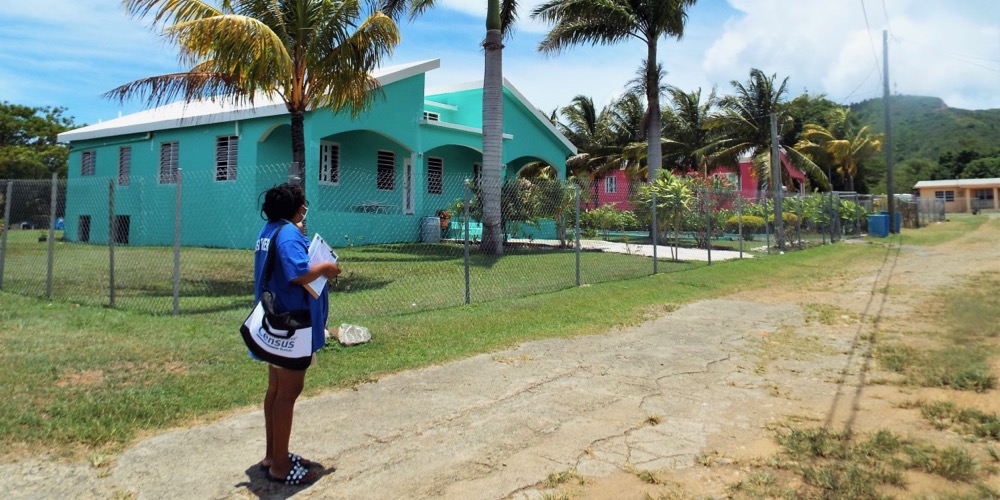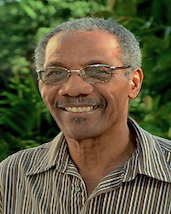
COVID shutdowns in 2020 may have undermined some Census Bureau work nationally, but the man in charge of the Virgin Islands count has expressed confidence in the territory’s process.
V.I. census results have yet to be released.

Frank Mills, the director of the Eastern Caribbean Center at the University of the Virgin Islands and the local coordinator for the decennial census, said he doesn’t expect even initial V.I. data to be released before the end of August.
The U.S. Census Bureau released the first set of figures for all 50 states, Washington, D.C. and Puerto Rico on April 1. That report put the total population for the country at 331,449,281 and gave a breakdown by state, D.C. and Puerto Rico.
The bureau has announced it will soon release information drilling down into those figures to reveal such things as housing unit counts, occupancy status and voting-age populations. In the interest of time, it will release that report in rather raw form by Aug. 16. A second, more understandable version, will be available by Sept. 30.
Again, the Virgin Islands and the other small U.S. territories – Guam, American Samoa, and the Northern Marianas – will not be included.
The so-called “island areas” are required to conduct the census every 10 years using the “long form,” a survey that includes questions on a wide range of topics that must be conducted in a personal interview. Questions cover such topics as education, transportation, and internet access.
Residents in the rest of the country fill out a short form focused almost exclusively on population numbers, and they can deliver it via mail or online. But the bureau still collects demographical information on them similar to that which is on the long form.
Instead of asking 331.4 million people questions every 10 years, the bureau sends out a detailed questionnaire to a sample 290,000 addresses each month, thus surveying – or attempting to survey – about 3.5 million households each year. That scientifically determined sample gives the bureau a good snapshot of the population across a wide spectrum of social and economic issues, census officials say.
Called the American Community Survey, the questionnaire was first used in 2005.
In recent years, it has seemed a practical way to get reliable information. In 2018, there was a 92 percent response rate; in 2019 there was an 86 percent response rate.
But the response in 2020 was just 71 percent, or, according to the bureau, about two-thirds of the usual response.
Moreover, the responses the bureau did get tended to come from people who were economically and educationally advantaged, meaning the results were skewed.
So last week, the bureau announced it will not release the 2020 results from the American Community Survey.
It blamed the pandemic.
“Response rates for March through September 2020 — half the months that would make up the 2020 ACS 1-year estimates — were severely impacted by the pandemic” according to information on the bureau website. “To protect the safety of employees and the people who respond to the survey, the Census Bureau was forced to suspend many ACS data collection operations including mailing survey materials, following up in person with households that didn’t respond, and collecting data from nursing homes, college dorms, prisons and other group quarters. These challenges in collecting responses significantly impaired the quality of the resulting estimates, which were often inconsistent with benchmarks or administrative data or changed in unexpected magnitudes.”
Of course, the Virgin Islands faced similar challenges in conducting the 2020 Census. It had to pull back its enumerators shortly after they began fieldwork in the spring of 2020, and they weren’t allowed to go door-to-door until June. Sometime in July, they had to suspend fieldwork again, Mills said, although he couldn’t remember the exact dates.
However, he said, the deadline for the work was extended by about two months, and the territory was given some leeway by the bureau to conduct some interviews by phone rather than in person.
“We did have about a dozen persons manning the phones,” he said. “Operations continued right up to December” rather than concluding at the end of September.
So, Mills said, the information coming out of the 2020 census for the Virgin Islands should be reliable. It is used to set policy, track trends and needs, and share in federal grants.
Whenever the bureau begins to release the territory’s results, they won’t come all at once.
“They do this over stages,” Mills said.





